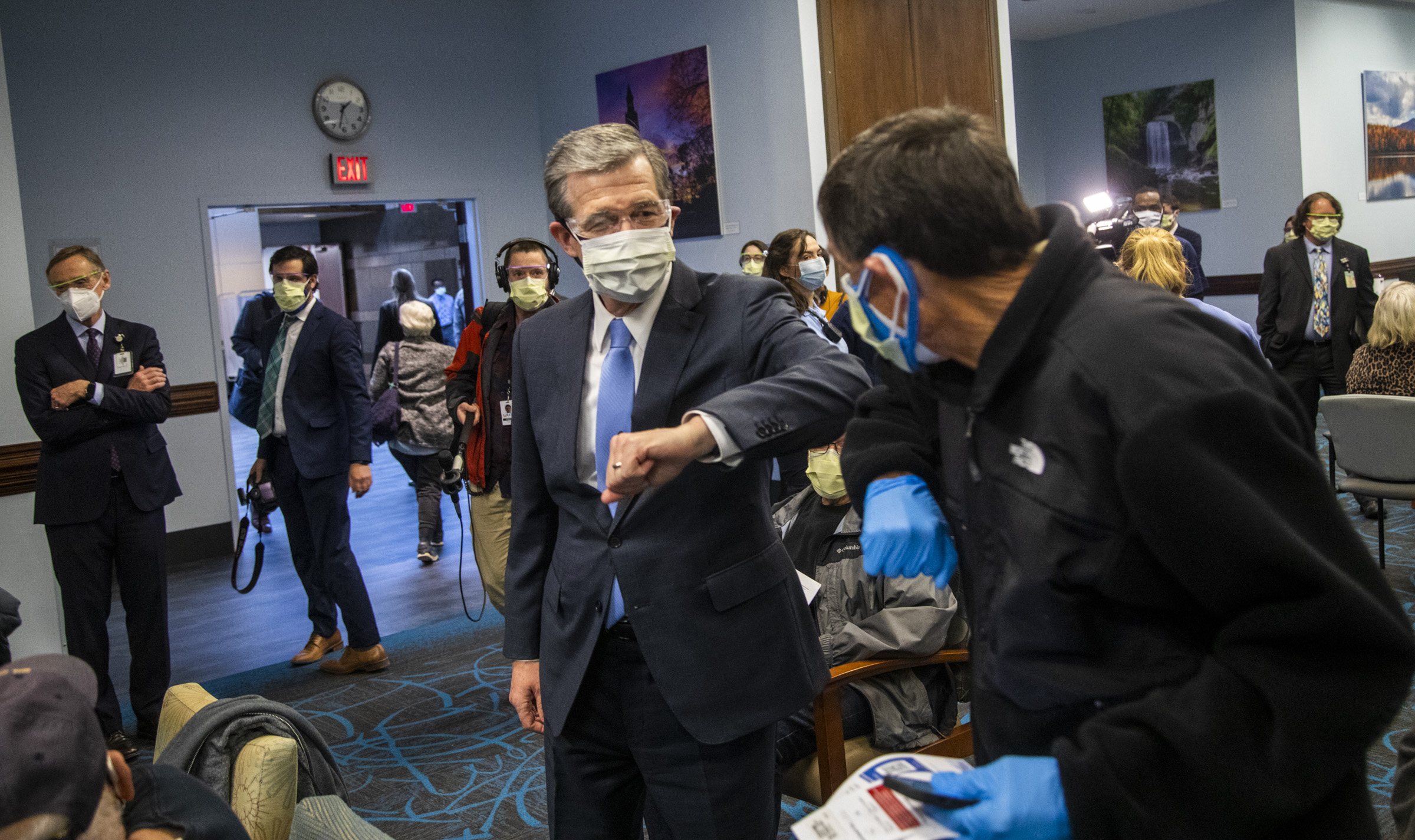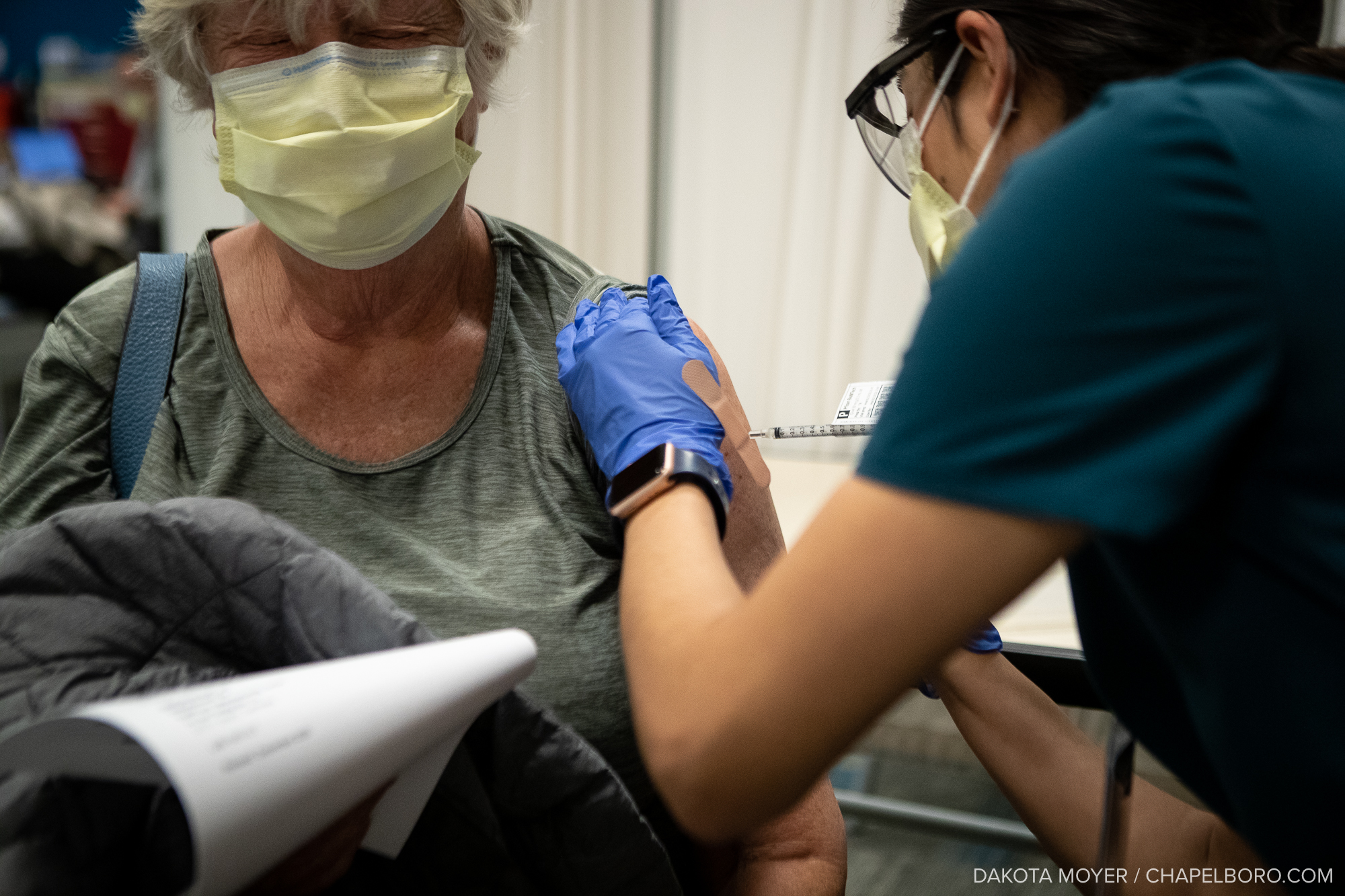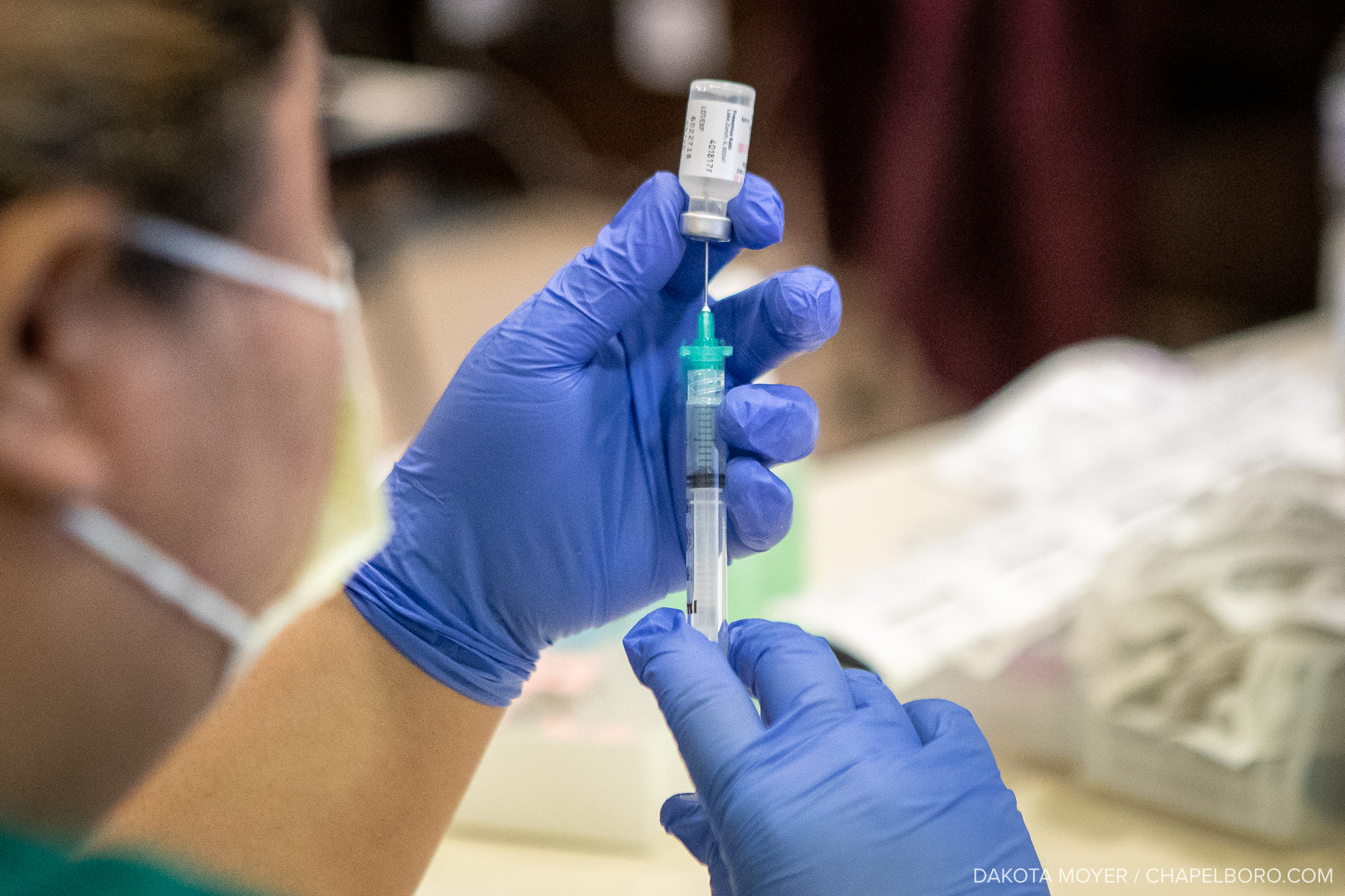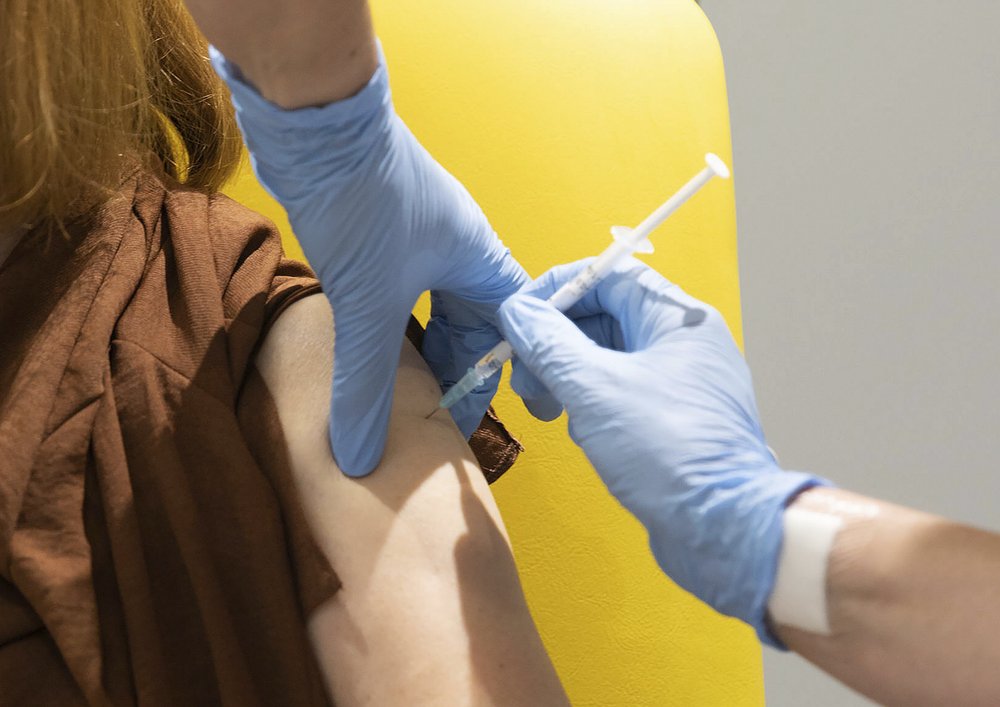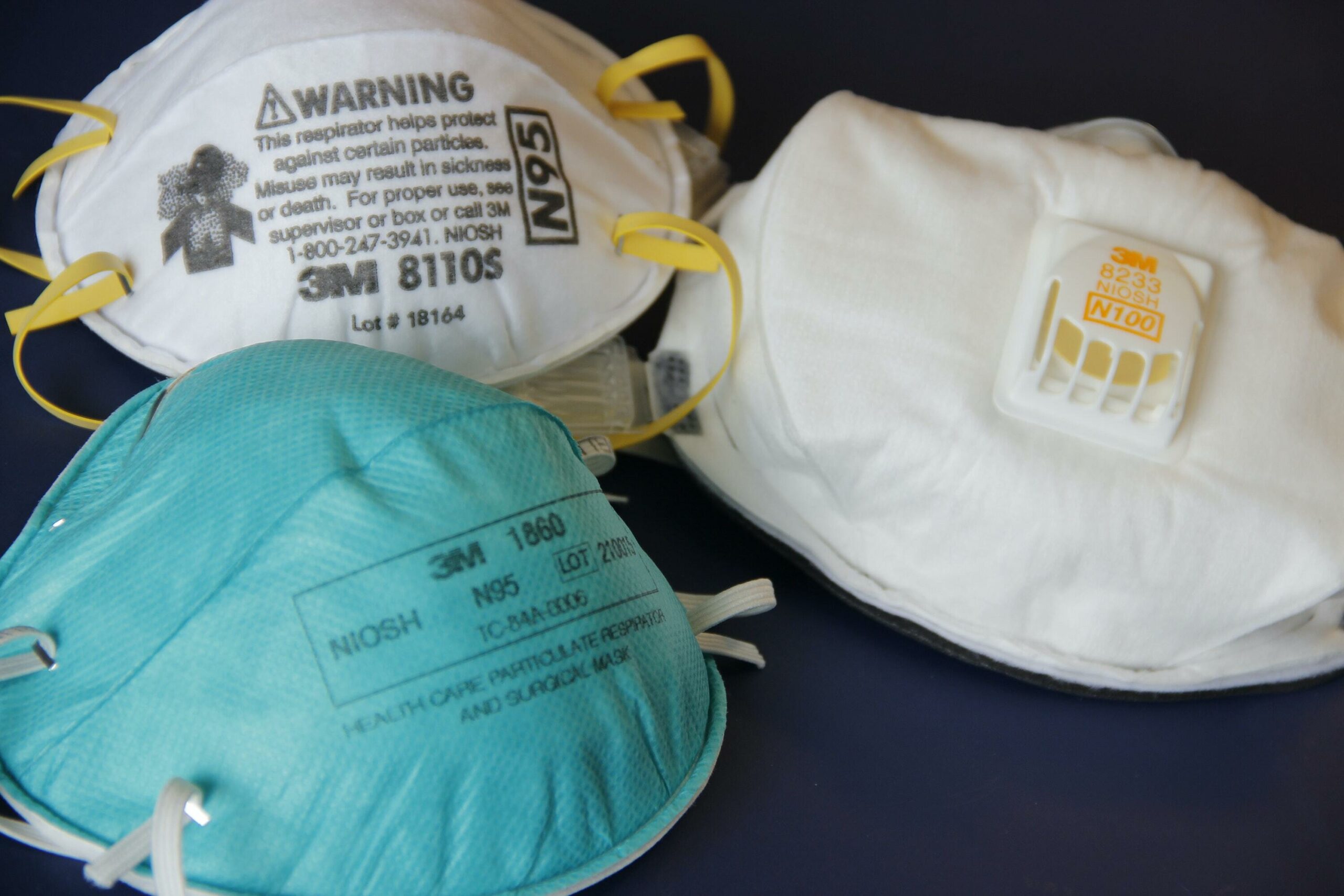For months, Orange County has led North Carolina’s other counties in COVID-19 vaccination rate. While it still does, its lead against other counties just saw a significant decrease.
What caused this? The state Department of Health and Human Services says it is due to a recent correction in its presentation of data.
NCDHHS released a statement on Friday sharing it updated all 100 counties’ COVID-19 vaccination rates displayed on the department’s website. It said the data, which had been provided in part by the federal Centers for Disease Control, has been incorrectly listed until now.
“As part of its regular data quality review, NCDHHS discovered a vaccination report from the CDC was based on county of administration,” said Friday’s press release. “All other vaccine data is by county of residence. North Carolina was the first state to raise the issue to the CDC as most other states are not providing this level of data on their public dashboards.”
As a result, the listed “percent of population fully vaccinated” against COVID-19 for Orange County decreased from nearly 80 percent to now 69 percent. That accurate rate still leads North Carolina counties, but now drops Orange closer to second-place Dare County, who saw its vaccination rate remain at 66 percent.
A high rate of shots administered in Orange County compared to its total population does make sense when examining the daily travel in the region. Orange County is a well-documented commuter county, meaning many people who work in the county do not live there. Similarly, many Orange County residents also travel to work in nearby counties. Groups like Carolina Demography and the Chamber for a Greater Chapel Hill-Carrboro have each recently presented data to confirm this.
The Orange County Health Department shared a statement with 97.9 The Hill reflecting on the recent changes to the county’s vaccination rates.
“Throughout the pandemic we have learned that we are all connected and the coronavirus does not care about county lines, or any other border,” the statement read. “It just looks for a host to infect. When our numbers were presumably as high as 80 percent we always knew we had more work to do and could not be complacent. Cases were still coming in and hospitals were still busy. Our high vaccination rate cannot be celebrated until all the counties in North Carolina, states in the U.S. and countries in the world have an equally high vaccine rate. That is what it will take to end COVID-19. As for the NCDHHS, we are grateful they are working hard to track this data and are transparent when an error has been made.”
While its nearly 11 percentage point drop is one of the steepest seen from the updated NCDHHS data, Orange County was not the county that saw the biggest shifts. Hoke County saw its previous rate of vaccinated population decrease from 47 percent to 29 percent, a change in 18 percentage points. Swain County saw the biggest increase in vaccination rate due to the update, with their previously listed rate of 36 percent now rising to nearly 48 percent.
Despite its high vaccination rate against the coronavirus, the Centers for Disease Control still lists Orange County in its “critical spread” range for COVID-19, a designation the county has held since August due to the presence of COVID-19’s delta variant.
The state Department of Health and Human Services acknowledged how crucial having accurate and reflective data is for North Carolina to continue its recovery from COVID-19.
“Throughout the pandemic,” said Friday’s release, “NCDHHS has worked to improve data accuracy and transparency in its reporting. The information on the data dashboard is used to promote equity, track progress and guide decision-making. Having the most accurate information available is important so local and state leaders have the data needed to inform decision-making.”
NCDHHS also announced it will now be including reinfections of COVID-19 into its positive case counts for the state. Reinfection data will not be added retroactively, according to the department. As of Sunday, North Carolina’s total positive COVID-19 cases of the pandemic surpass 1,400,000.
Read the full announcement from the North Carolina Department of Health and Human Services here. For up-to-date coronavirus data for the state, visit the department’s COVID-19 Dashboard.
Chapelboro.com does not charge subscription fees. You can support local journalism and our mission to serve the community. Contribute today – every single dollar matters.



